Abstract
Mortality was studied in 14 111 patients with ankylosing spondylitis given a single course of x-ray treatment during 1935-54. Mortality from all causes combined was 66% greater than that of members of the general population of England and Wales. There were substantial excesses of deaths from non-neoplastic conditions, but these appeared to be associated with the disease itself rather than its treatment. A nearly fivefold excess of deaths from leukaemia and a 62% excess of deaths from cancers of sites that would have been in the radiation fields ("heavily irradiated sites") were likely to have been a direct consequence of the radiation treatment itself. The excess death rate from leukaemia was greatest three to five years after treatment and was close to zero after 18 years. In contrast, the excess of cancers of heavily irradiated sites did not become apparent until nine or more years after irradiation and continued for a further 11 years. More than 20 years after irradiation the excess risk declined, but the fall was not statistically significant. The number of cancers of sites not considered to be in the radiation beams was 20% greater than expected. This excess, although not statistically significant, may also have been due to radiation scattered from beams directed at other parts of the body. The risk of a radiation-induced leukaemia or other cancer was related to the age of the patient at the time of treatment. Those irradiated when aged 55 years or more had an excess death rate from leukaemia more than 15 times that of those treated under 25 years of age, and a similar difference was apparent for cancers of heavily irradiated sites. The radiation dose to the bone marrow was estimated for the patients who died with leukaemia and for a 1 in 15 sample of the total study population. The excess risk of leukaemia varied erratically with radiation dose owing, perhaps, in part to the increase in the proportion of the cells in the bone marrow that are sterilised with increasing doses. A mathematical model using a linear leukaemia induction rate and exponential cell sterilisation fitted the data reasonably well, and the results suggested that for low radiation doses about two deaths from leukaemia would be induced per million people per rad of x rays per year for up to 20 years after exposure. Because of the failure to find a clear dose-response relationship this estimate must be regarded with caution, but it is in reasonable agreement with that derived from studies of the atomic bomb survivors.
Full text
PDF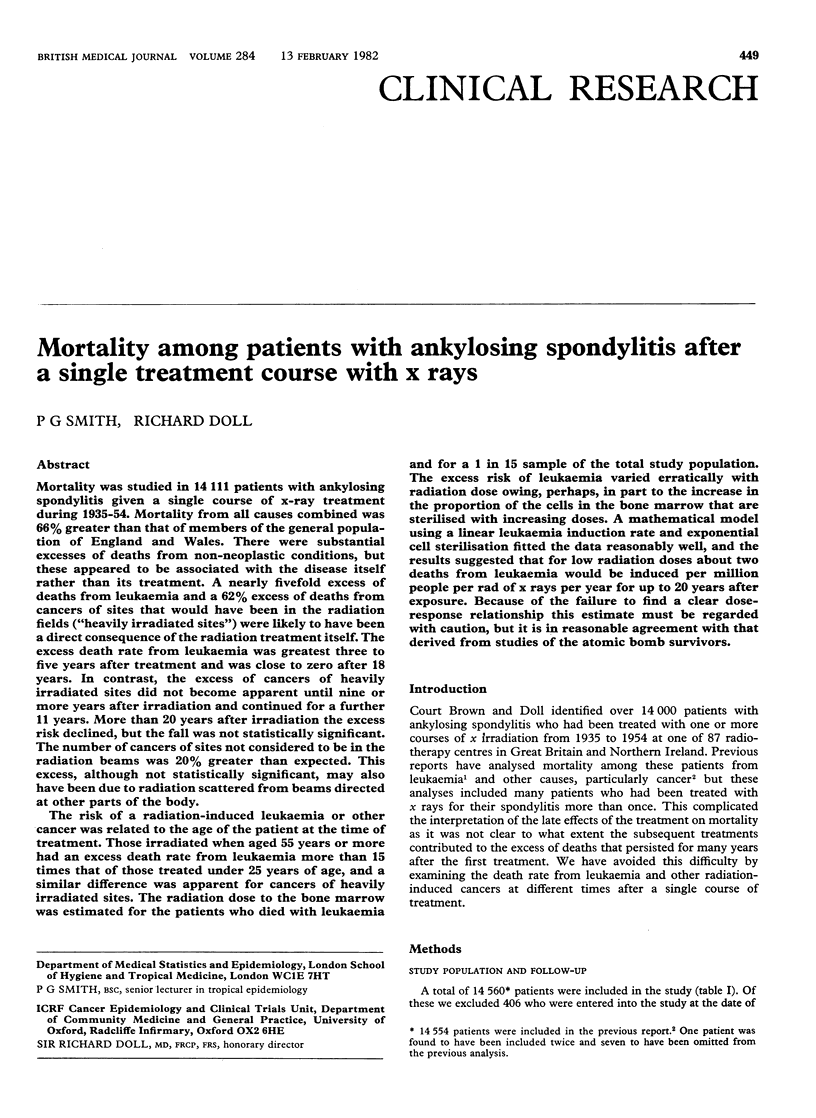
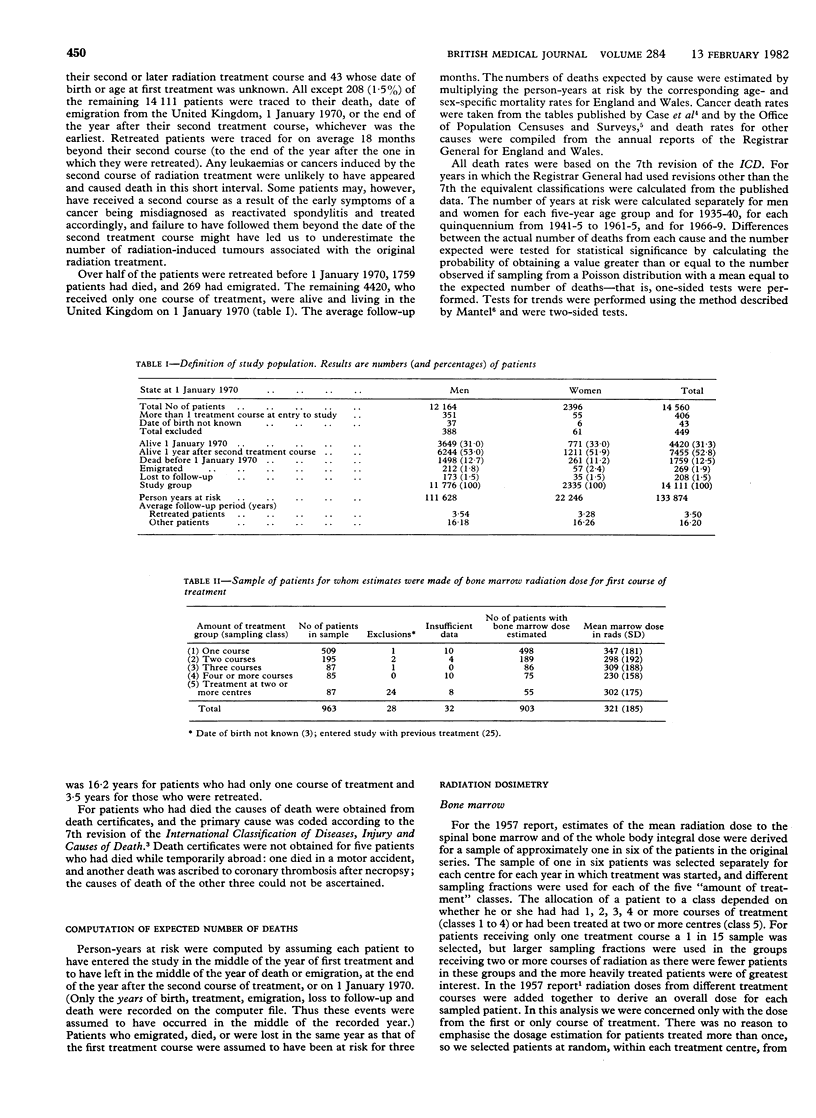
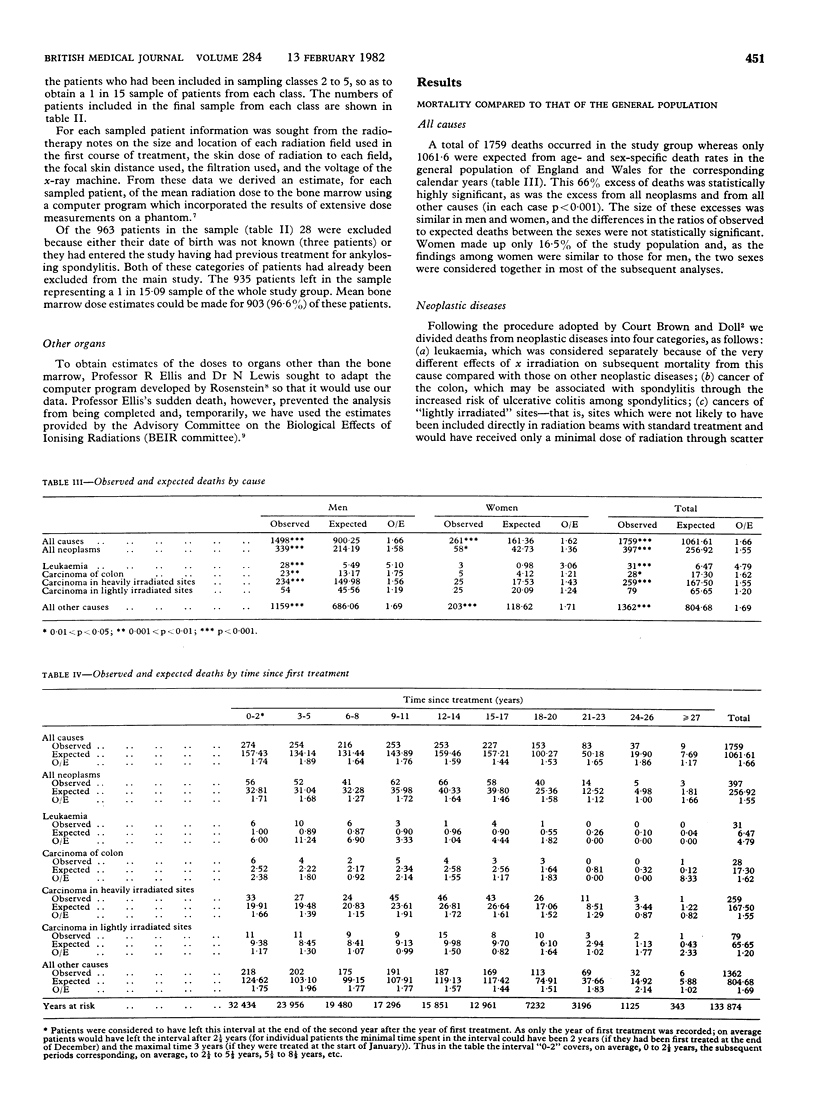

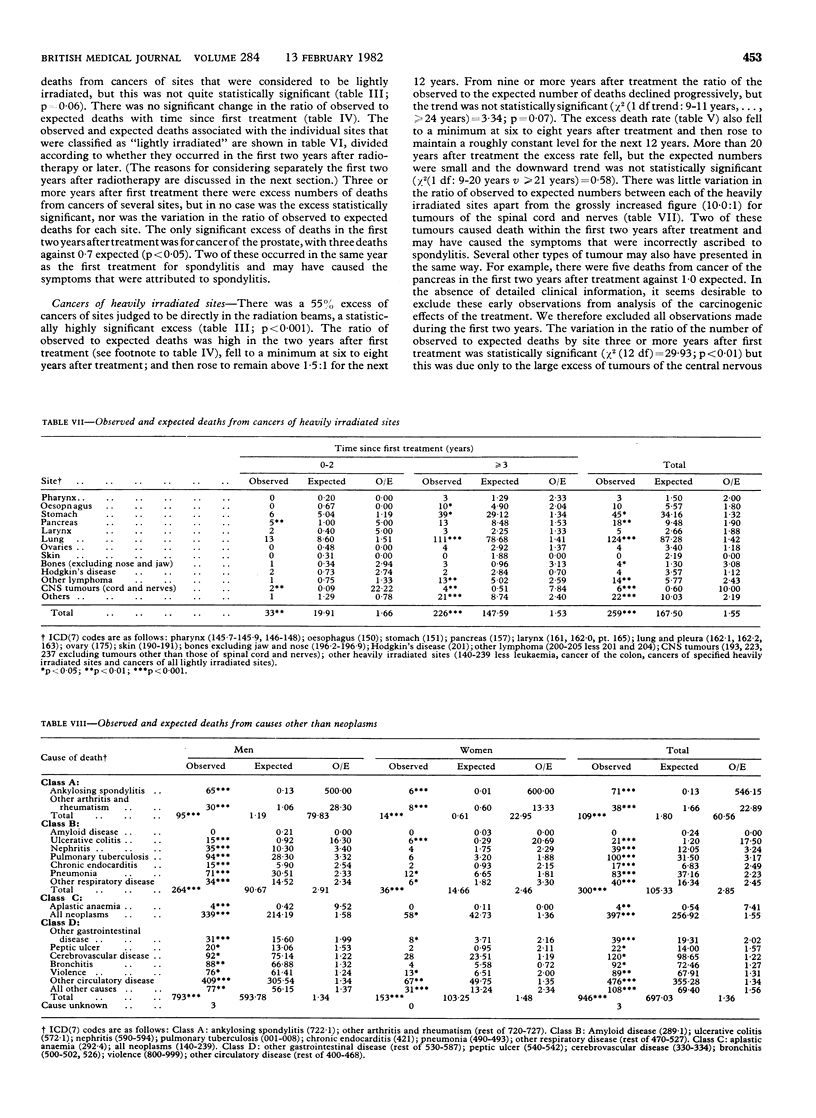
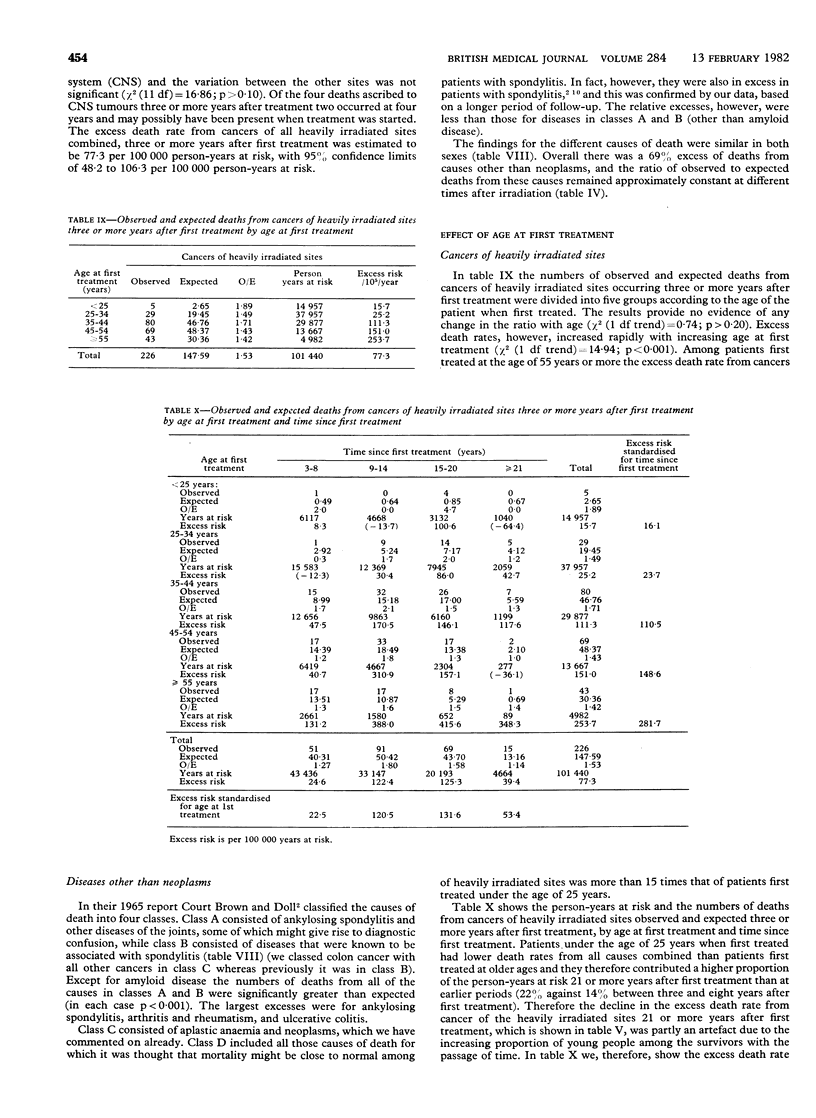

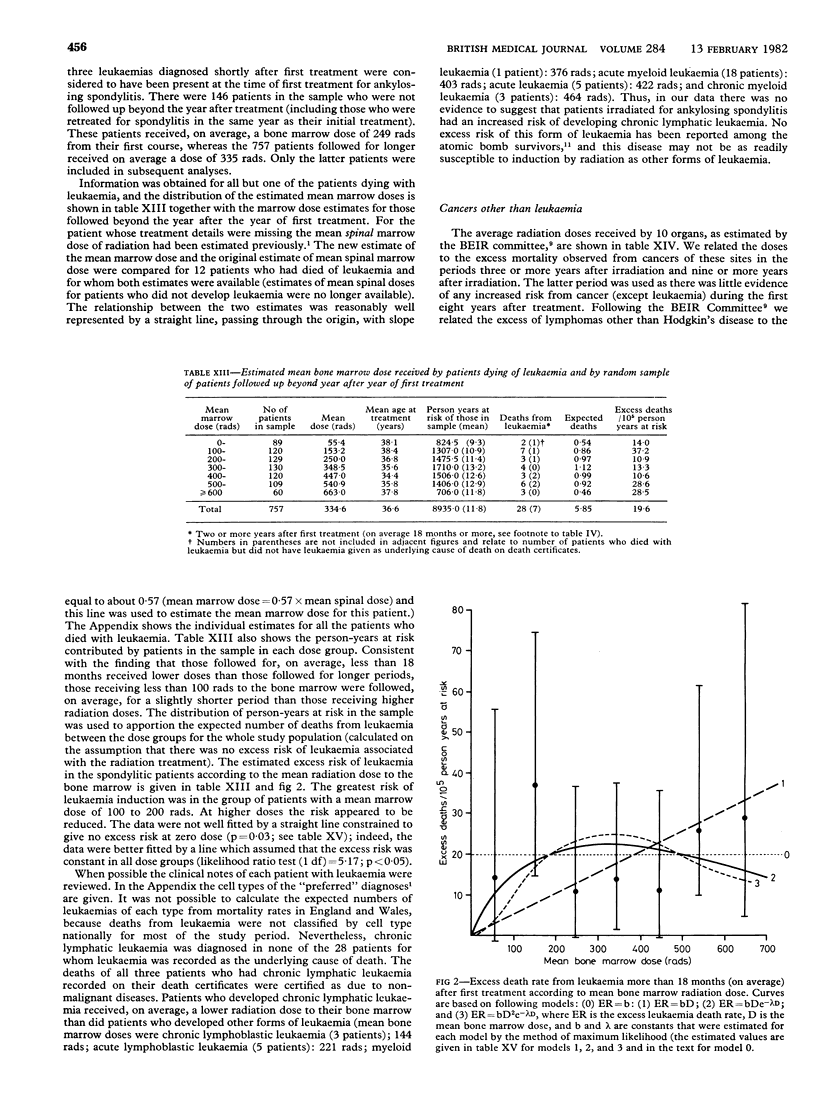
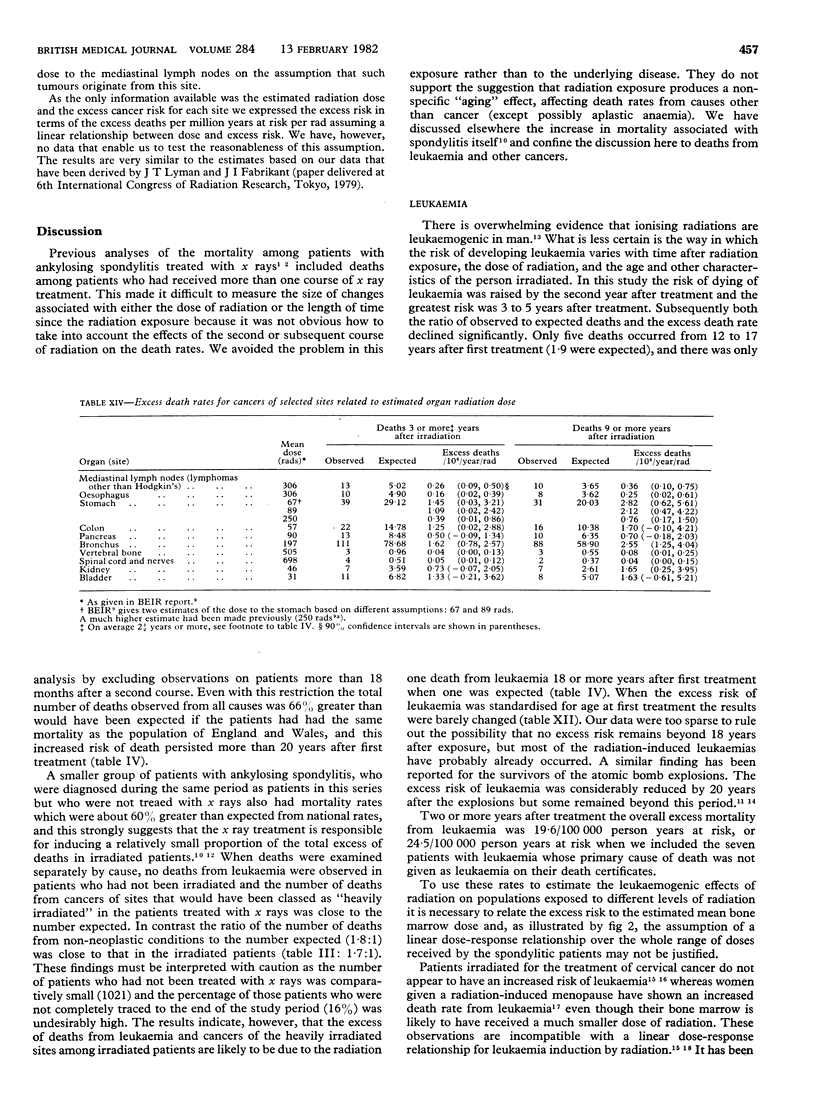
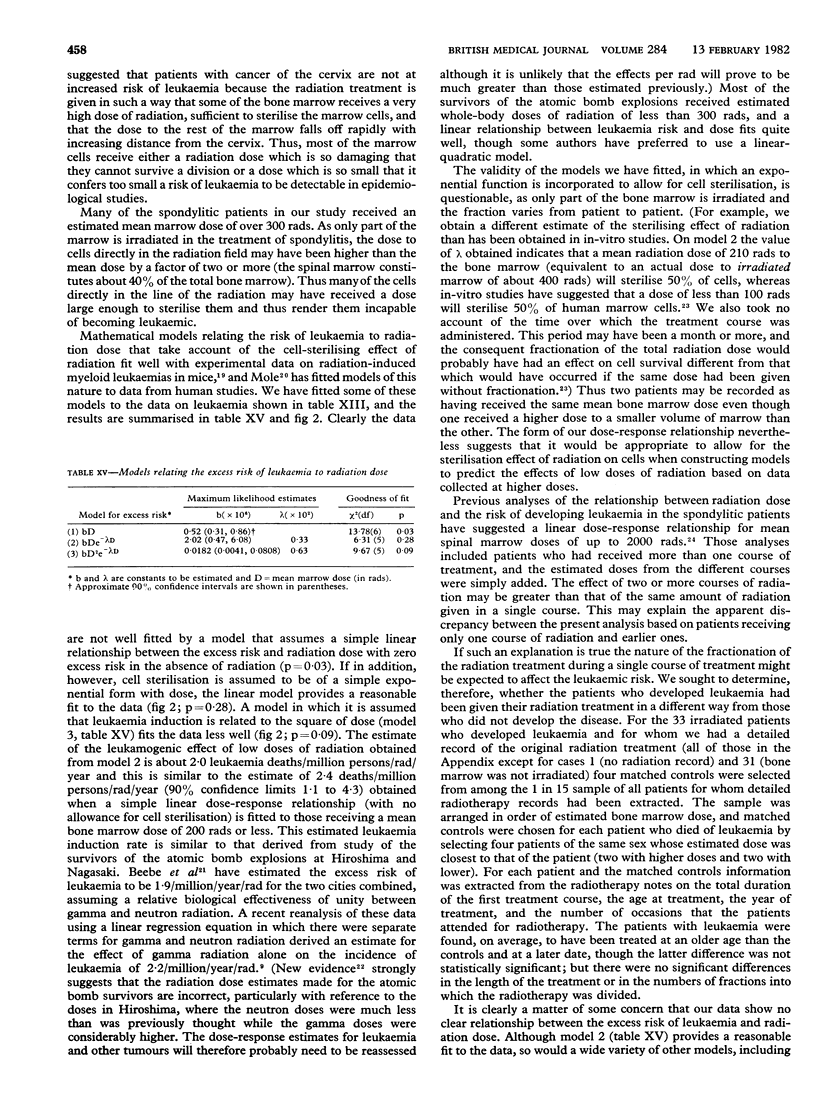
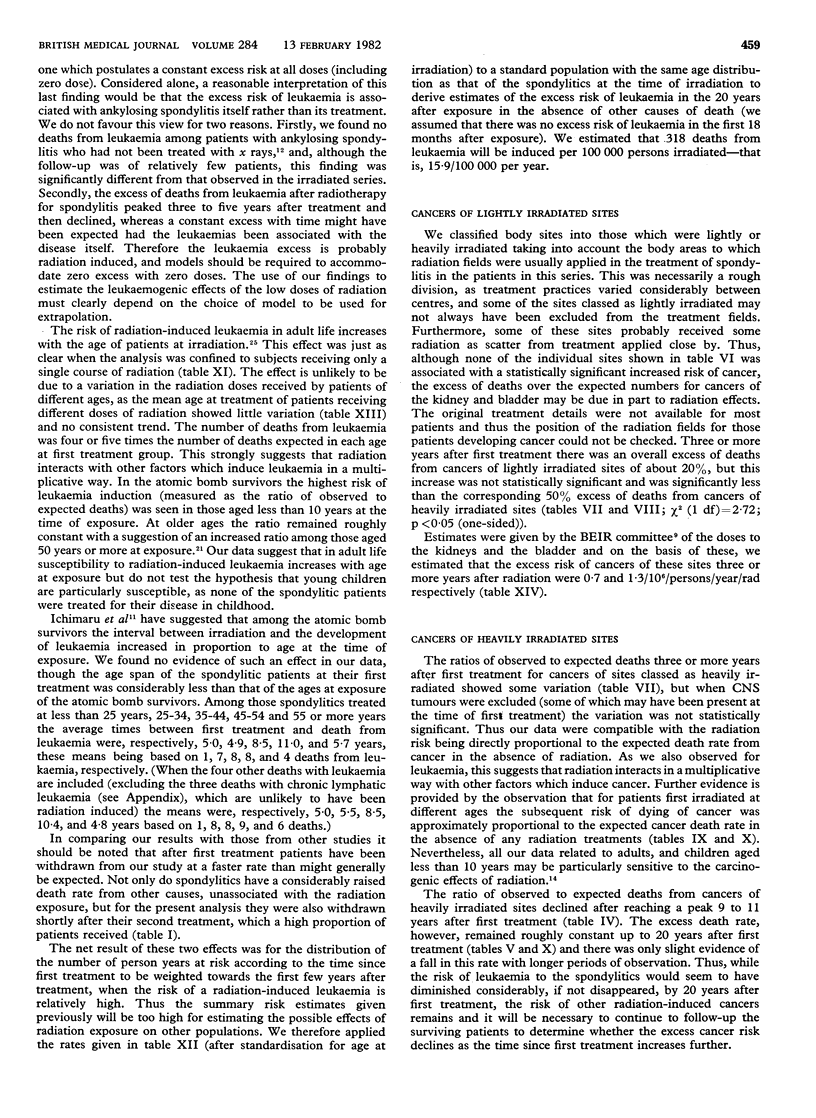
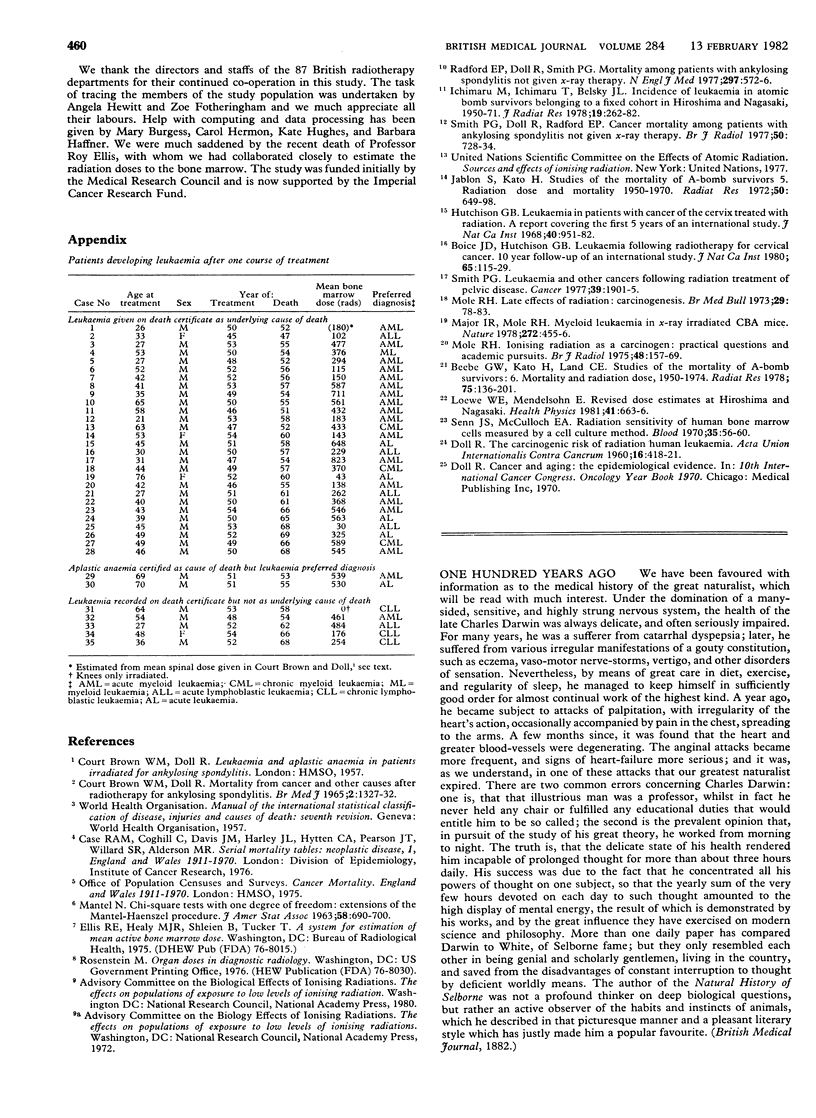
Selected References
These references are in PubMed. This may not be the complete list of references from this article.
- Beebe G. W., Kato H., Land C. E. Studies of the mortality of A-bomb survivors: 6. mortality and radiation dose, 1950--1974. Radiat Res. 1978 Jul;75(1):138–201. [PubMed] [Google Scholar]
- Boice J. D., Hutchison G. B. Leukemia in women following radiotherapy for cervical cancer: ten-year follow-up of an international study. J Natl Cancer Inst. 1980 Jul;65(1):115–129. [PubMed] [Google Scholar]
- Brown W. M., Doll R. Mortality from cancer and other causes after radiotherapy for ankylosing spondylitis. Br Med J. 1965 Dec 4;2(5474):1327–1332. doi: 10.1136/bmj.2.5474.1327. [DOI] [PMC free article] [PubMed] [Google Scholar]
- DOLL R. The carcinogenic risk of radiation human leukemia. Acta Unio Int Contra Cancrum. 1960;16:418–421. [PubMed] [Google Scholar]
- Hutchison G. B. Leukemia in patients with cancer of the cervix uteri treated with radiation. A report covering the first 5 years of an international study. J Natl Cancer Inst. 1968 May;40(5):951–982. [PubMed] [Google Scholar]
- Ichimaru M., Ishimaru T., Belsky J. L. Incidence of leukemia in atomic bomb survivors belonging to a fixed cohort in Hiroshima and Nagasaki, 1950--71. Radiation dose, years after exposure, age at exposure, and type of leukemia. J Radiat Res. 1978 Sep;19(3):262–282. doi: 10.1269/jrr.19.262. [DOI] [PubMed] [Google Scholar]
- Jablon S., Kato H. Studies of the mortality of A-bomb survivors. 5. Radiation dose and mortality, 1950-1970. Radiat Res. 1972 Jun;50(3):649–698. [PubMed] [Google Scholar]
- Loewe W. E., Mendelsohn E. Revised dose estimates at Hiroshima and Nagasaki. Health Phys. 1981 Oct;41(4):663–666. [PubMed] [Google Scholar]
- Major I. R., Mole R. H. Myeloid leukaemia in x-ray irradiated CBA mice. Nature. 1978 Mar 30;272(5652):455–456. doi: 10.1038/272455a0. [DOI] [PubMed] [Google Scholar]
- Mole R. H. Ionizing radiation as a carcinogen: practical questions and academic pursuits The Silvanus Thompson Memorial Lecture delivered at The British Institute of Radiology on April 18, 1974. Br J Radiol. 1975 Mar;48(567):157–169. doi: 10.1259/0007-1285-48-567-157. [DOI] [PubMed] [Google Scholar]
- Mole R. H. Late effects of radiation: carcinogenesis. Br Med Bull. 1973 Jan;29(1):78–83. doi: 10.1093/oxfordjournals.bmb.a070963. [DOI] [PubMed] [Google Scholar]
- Radford E. P., Doll R., Smith P. G. Mortality among patients with ankylosing spondylitis not given X-ray therapy. N Engl J Med. 1977 Sep 15;297(11):572–576. doi: 10.1056/NEJM197709152971103. [DOI] [PubMed] [Google Scholar]
- Senn J. S., McCulloch E. A. Radiation sensitivity of human bone marrow cells measured by a cell culture method. Blood. 1970 Jan;35(1):56–60. [PubMed] [Google Scholar]
- Smith P. G., Doll R., Radford E. P. Cancer mortality among patients with ankylosing spondylitis not given X-ray therapy. Br J Radiol. 1977 Oct;50(598):728–734. doi: 10.1259/0007-1285-50-598-728. [DOI] [PubMed] [Google Scholar]
- Smith P. G. Leukemia and other cancers following radiation treatment of pelvic disease. Cancer. 1977 Apr;39(4 Suppl):1901–1905. doi: 10.1002/1097-0142(197704)39:4+<1901::aid-cncr2820390826>3.0.co;2-t. [DOI] [PubMed] [Google Scholar]


